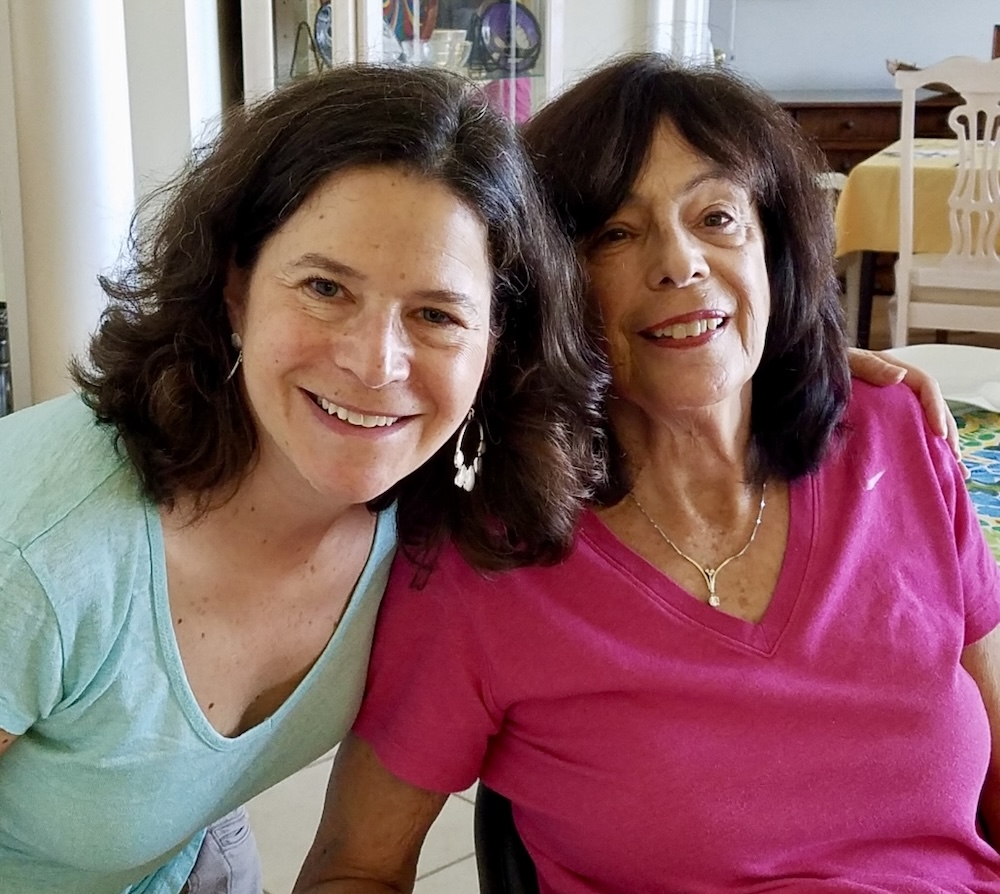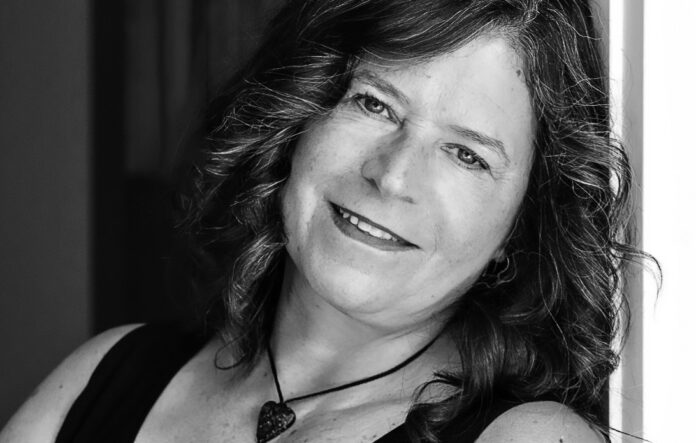Amyotrophic Lateral Sclerosis is a fatal neurodegenerative disease that can strike anyone, but is sometimes hereditary. Many folks with a history of ALS in their family are too scared to get tested for C9orf72, the most common genetic cause of the disease.
But Mindy Uhrlaub faced what she calls the “monster under my bed” head-on. She writes about coming up positive for C9orf72 and how it changed her in her inspiring new book Last Nerve: A Memoir of Illness and the Endurance of Family ($17.95), which she will present Sat/21 at Book Passage in Corte Madera.
The Marin-based writer says finding out she has the gene for hereditary ALS, also known as familial ALS, is the best thing that ever happened to her. It led her to a mission in life: being an activist, speaker, and research participant in the hopes of finding a cure for the illness that killed her mother and grandfather—and which might also kill her.
“I feel like I’ve become a totally different person, a better person,” Uhrlaub told 48 Hills. “It feels like I was put on Earth to do this. I don’t consider it a burden.”

Scientists only discovered C9orf72 in 2011, which means that Uhrlaub’s mom had no idea she was a carrier when she had her and her brother. When her mother was diagnosed with ALS in 2017, Uhrlaub’s mom thought it was just a cruel coincidence that she’d fallen ill with the same disease that took her father. Uhrlaub didn’t think it was a fluke. A parent herself by then, she was convinced her mom’s ALS was genetic. So she got tested in 2018—not just for her own sake, but for the sake of her two boys, then 12 and 14.
“My mom had no way of knowing she had a gene for ALS any more than I did,” said Uhrlaub. “But my kids know. I wanted to make sure that they could make intelligent decisions about having kids.”
In addition to being responsible for 25 to 40 percent of familial ALS cases, C9orf72 causes 25 percent of another neurodegenerative disease, frontotemporal dementia (FTD). Carriers can get either ALS or FTD or both. (Other genes, including SOD1, also cause inherited ALS.)
Uhrlaub was already grappling with multiple calamities at home when she got the news about her genetic status. Her husband Kirk was battling an aggressive form of lymphoma. Her oldest son was having serious mental health problems. Her younger son was feeling neglected. And her Nanee—Uhrlaub’s nickname for her beloved mother—was dying of ALS. Yet instead of pushing her over the edge, this last blow barely fazed her.
“Testing positive for C9orf72 only bothered me like a boil on my butt,” she said. “If I sat with it the wrong way, it bothered me. But it wasn’t like I’d be walking down the street and suddenly think ‘Holy moly—I could die from ALS!’ I still don’t think like that.”
Managing so many threats to her family, followed by her mother’s death and the onset of the COVID pandemic in 2020, forced her to put her desire to get involved in ALS research on pause for a while. But she quickly made up for lost time.
Today, she’s enrolled in 20 longitudinal research studies. Participating in gene editing studies has been especially rewarding for Uhrlaub. In a nutshell, scientists put her skin cells in a CRISPR model, give them ALS, and then cure the cells.
“It’s very heady, exciting stuff,” she said. “I think CRISPR is the best option for us.”

She’s also excited about an mRNA vaccine to prevent ALS in C9orf72 carriers that goes into trial later this year.
Uhrlaub’s extensive advocacy work includes writing a report called “Living With ALS” for the National Academies of Science, Engineering, and Medicine. She’s also a co-founder of End the Legacy, a non-profit that supports people impacted by inherited ALS and FTD. She’s traveled to Washington D.C. to speak to senators about genetic non-discrimination. And last month, she won the Harvey and Bonny Gaffen Advancements in ALS Award, an honor bestowed on her by the Les Turner ALS Foundation.
Genetic ALS carriers typically start to show signs of the disease between the ages of 40 and 60. Early symptoms vary—there are different types of ALS—but include muscle weakness and twitching, slurred speech, and difficulty swallowing. Uhrlaub is in her fifties and remains healthy and optimistic. When she started her journey, research indicated there was a 90 percent chance she’d develop ALS. As scientists learn more about the C9orf72, they’ve reduced those odds to around 60 or 70 percent.
“It’s sort of a crap shoot, so I do what I can to mitigate chances I’ll develop symptoms,” said Urhlaub.
She’s been on the ALS drug Riluzole for almost two years. Adheres to a strict neuro-protective, anti-inflammatory diet. Takes a battery of supplements. Exercises regularly and avoids any activities where falling and head injuries, a risk factor for ALS, are common. In spite of all she does to keep the monster under her bed at bay, Uhrlaub doesn’t delude herself that she’s escaped it.
“When I ask my neurologist if he thinks I’m going to live to see a cure, he’s really clear that I might not,” she said. “But my kids will. And the only way that will happen is if I continue to do the research.”
LAST NERVE BOOK PRESENTATION Sat/21, 4pm. Book Passage, Corte Madera. More info here.





